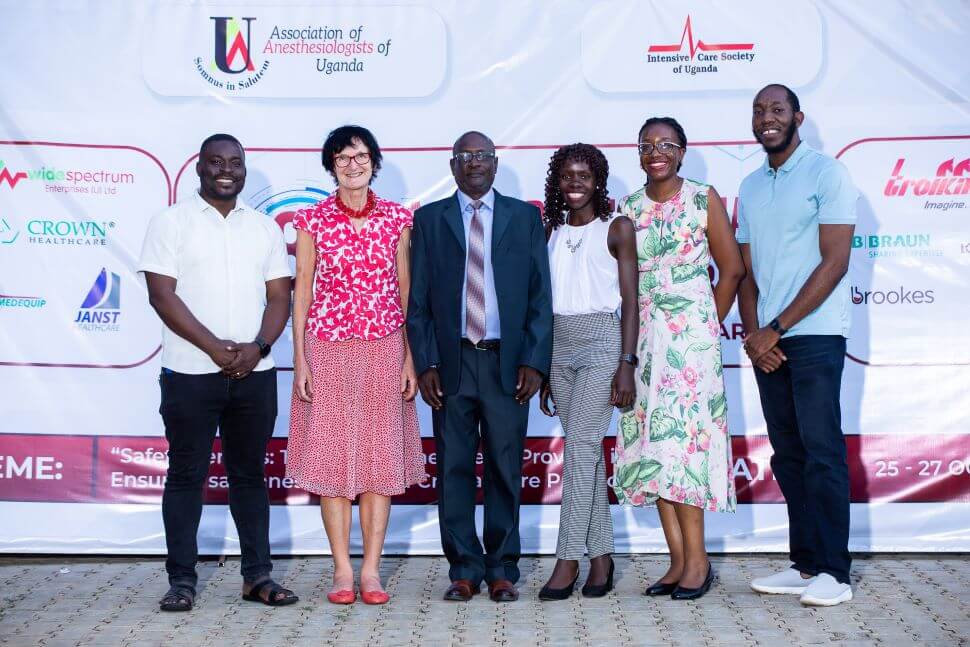Over the past decade, surgery and anaesthesia have begun to take centre stage in the discussions around global health and solutions to the ever-increasing surgical burden of disease around the world are beginning to receive long overdue attention. The 68th World Health Assembly in 2015 recognized the importance of strengthening essential and emergency and surgical and anaesthesia care as a component of universal health coverage. (Organization, 2015) Since then, the different member states have pursued different avenues to ensure that this dream becomes a reality.
Uganda’s population
Uganda, a low-income country in East Africa has a population of over 46 million (2023 estimates) with more than half of that population under 30 years of age and GDP per capita of $964.2. Improvements notwithstanding, the country still has unacceptably high mortality indicators with an infant mortality rate of 40.6 per 1000 live births and a maternal mortality rate of 189 per 100,000 live births. (Uganda M. o.) Despite these glaring statistics, access to safe, timely and quality anaesthesia and surgical care remains a challenge in this East African country.
Access to healthcare in Uganda
A 2018 study in selected hospitals in Uganda’s public sector found that Uganda was a far cry from meeting the Lancet Commission for Global surgery’s 2030 targets. (Meara, 2015) Despite the public health sector serving more than half of the population, less than a quarter had access to a health facility with surgical services within 2 hours, the anaesthetic, surgical and obstetric physician workforce density was 0.34 per 100,000 population and these were not always available 24 hours a day. Half the hospitals didn’t regularly track perioperative mortality data and there were multiple infrastructural challenges limiting access to surgical care. (Katherine Albutt, 2018) These indicators worsened at the height of the COVID pandemic due to the multiple public health interventions implemented to curb the spread of COVID 19. (Bose, 2023)
The African Surgical Outcomes Studies in both adults and children, found disproportionately high complication and mortality rates despite having a younger more robust population. Children had complication and mortality rates four-fold and 11-fold higher than those in high income countries (Toborg, 2023) and adults in Africa were twice more likely to die after surgery compared to the rest of the population globally. (Prof Bruce M Biccard, 2018)
The Patient Safety Fellowship Program
The Global Interprofessional Patient Safety Fellowship Program hosted by the Patient Safety Movement Foundation brought together a diverse group of four health care professionals for its inaugural program including Ugandan anaesthesiologist, Dr Elizabeth Igaga. (Foundation) Her interest in this program was fuelled by the quest for simple, cost-effective measures to make improvements to the complex challenges in the perioperative patient safety space in Uganda. One and a half years later, the program provided an avenue for growth and development of key opinion leadership globally through interactions with world renowned patient safety leaders, an important part of tackling the global health care safety challenge.
The 8th Annual Association of Anesthesiologists (AAU) Conference 2023
In October 2023, the AAU hosted their 8th Annual Scientific Conference in Mbarara city, Uganda chaired by Dr Mary Juliet Nampawu, one of seven paediatric anaesthesiologists in the country. The conference theme: ‘Safety Persists: The Role of the Anaesthesia Provider in Ensuring Safe Anaesthesia and Critical Care Practices.’ (Uganda, n.d.) This conference provided a safe space for rich discussions and sharing of experiences and expertise where anaesthesia safety related challenges. The world renown Dr Jannicke Mellin-Olsen also member of the Governance Board for the Patient Safety Movement Foundation was the keynote speaker. The AAU believes in collaboration and is heavily involved in building and strengthening safe surgical systems alongside Uganda’s Ministry of Health, and other multisectoral stakeholders. The next article in this series will attempt to address the approach to provision of safer care in Uganda.
References
Bose, B. (2023). Impacts of the COVID-19 Lockdown on Healthcare Inaccessibility and Unaffordability in Uganda. The American Journal of Tropical Medicine and Hygiene, 527–535. Retrieved from https://www.ajtmh.org/view/journals/tpmd/109/3/article-p527.xml
Foundation, T. P. (n.d.). Retrieved from https://psmf.org/fellowship-program/
Katherine Albutt, M. P. (2018). Access to Safe, Timely, and Affordable Surgical Care in Uganda:. Would Journal of Surgery, 42, 2303–2313.
Meara, J. G. (2015). Global Surgery 2030: evidence and solutions for achieving health, welfare, and economic development. The Lancet, 569-624.
Organization, W. H. (2015, May 26). Retrieved from https://apps.who.int/gb/ebwha/pdf_files/WHA68/A68_R15-en.pdf
Prof Bruce M Biccard, P. (2018). Perioperative patient outcomes in the African Surgical Outcomes Study: a 7-day prospective observational cohort study. The Lancet, 1589-1598.
Toborg, A. (2023). Outcomes after Surgery for Children in Africa a Fourteen-Day Prospective Observational Cohort Study (ASOS-Paeds). The Lancet.
Uganda, A. o. (n.d.). Retrieved from https://anesthesiaug.org/8th-aau-and-icsu-annual-scientific-conference/
Uganda, M. o. (n.d.). Retrieved from Ministry of Health Uganda Website: https://www.health.go.ug/wp-content/uploads/2023/09/UDHS-2022-presentation-draft-zero123-finalxxx.pdf





